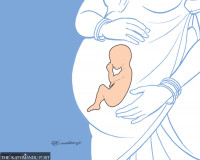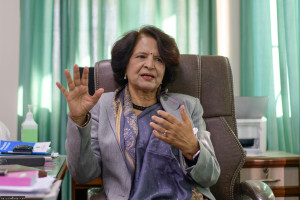Health
Ministry plans verbal autopsy in neonatal deaths
Nepal has committed to reducing neonatal deaths to 12 from 21 at present in every 1,000 births by 2030 to meet SDGs.
Post Report
In a bid to find the cause of newborn deaths, the Ministry of Health and Population is planning to carry out a verbal autopsy on all infants dying soon after birth.
Officials at the ministry hope the move will help discover the cause of deaths of newborn babies and ultimately help prevent similar fatalities.
The United States Agency for International Development (USAID) has agreed to carry out a verbal autopsy of neonatal deaths, said Nisha Joshi, a public health officer at the Family Welfare Division under the Department of Health Services. “They will carry out a study by using their staffers and give us the report of individual deaths,” Joshi said.
Verbal autopsy, usually called VA, determines individuals’ causes of death and cause-specific mortality fractions (CSMFs) in populations without a complete vital registration system.
According to the World Health Organisation, systematic analyses of overall mortality trends as well as events and contributing factors leading to individual deaths can identify barriers in health systems and inspire local solutions to prevent such deaths in the future.
A neonate or infant is a baby under 28 days of age. Doctors say a newborn is at the highest risk of dying within the first 28 days. The vast majority of such deaths occur in developing countries like Nepal where access to health care is low.
Nepal has committed to reducing neonatal mortality to 12 in every 1,000 live births by 2030. However, the rate of newborn deaths has been stagnant since 2016, according to the Nepal Demographic and Health Survey-2022 by the Ministry of Health and Population.
The nationwide study conducted between January 5 and June 22 this year with technical and financial support from the USAID shows that 21 children in every 1,000 live births die within a month.
The government’s target for Sustainable Development Goals was to reduce the neonatal mortality rate to 16 deaths per every 1,000 live births by 2022.
SDGs, a follow-up on the Millennium Development Goals (MDGs), aim to end poverty, hunger and all forms of inequality worldwide by 2030. Nepal has committed to meeting the goals.
Officials at the health ministry said that they have been working to set up a ‘special newborn care unit’ in all district hospitals throughout the country to lessen newborn deaths.
Concerned agencies under the ministry have started training all doctors, nurses and paramedics serving in hospitals of Nuwakot, Dhading, Sindhupalchok and Makawanpur districts, according to them.
Even as Nepal strives to reduce the deaths of newborn babies, it lacks neonatal death surveillance, a key intervention for improving neonatal survival. Such surveillance provides an understanding of the number and causes of deaths.
The Health Ministry has been carrying out maternal and perinatal death surveillance in only 32 out of 77 districts throughout the country.
Doctors say prematurity (neonates born at less than 37 weeks gestation), birth asphyxia (a condition in which a baby does not receive enough oxygen before, during, or directly after birth), and sepsis (organ dysfunction caused by a dysregulated host response to infection) are considered major reasons for neonatal deaths.
Maternal and child health experts say unless the causes of deaths of babies are determined, it’s impossible to reduce the neonatal mortality rates.
Eighty-five percent of all deaths among children under five in Nepal take place before a child’s first birthday, with 64 percent occurring during the child’s first month, according to the study.




 5.83°C Kathmandu
5.83°C Kathmandu













